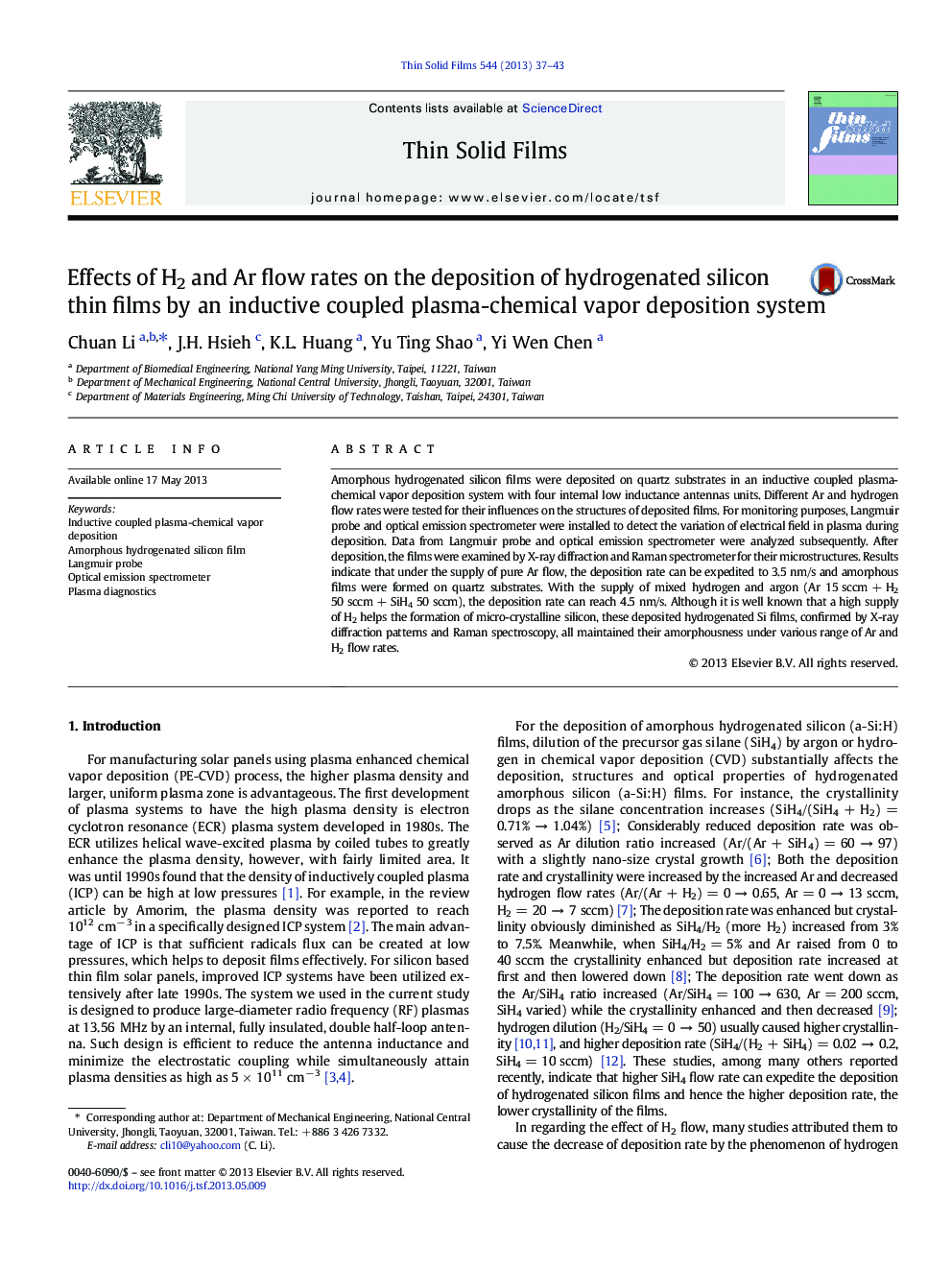| Article ID | Journal | Published Year | Pages | File Type |
|---|---|---|---|---|
| 1665948 | Thin Solid Films | 2013 | 7 Pages |
•Amorphous hydrogenated silicon films were deposited by inductive coupled plasma.•Different Ar and H2 flow rates were tested for their effects on the structures of films.•Under pure Ar flow, the deposition rate of can be expedited to 3.5 nm/sec.•The deposition rate reached 4.5 nm/sec under Ar 15 sccm, H2 50 sccm, SiH4 50 sccm.•All films are amorphous confirmed by X-ray diffraction and Raman spectroscopy.
Amorphous hydrogenated silicon films were deposited on quartz substrates in an inductive coupled plasma-chemical vapor deposition system with four internal low inductance antennas units. Different Ar and hydrogen flow rates were tested for their influences on the structures of deposited films. For monitoring purposes, Langmuir probe and optical emission spectrometer were installed to detect the variation of electrical field in plasma during deposition. Data from Langmuir probe and optical emission spectrometer were analyzed subsequently. After deposition, the films were examined by X-ray diffraction and Raman spectrometer for their microstructures. Results indicate that under the supply of pure Ar flow, the deposition rate can be expedited to 3.5 nm/s and amorphous films were formed on quartz substrates. With the supply of mixed hydrogen and argon (Ar 15 sccm + H2 50 sccm + SiH4 50 sccm), the deposition rate can reach 4.5 nm/s. Although it is well known that a high supply of H2 helps the formation of micro-crystalline silicon, these deposited hydrogenated Si films, confirmed by X-ray diffraction patterns and Raman spectroscopy, all maintained their amorphousness under various range of Ar and H2 flow rates.
